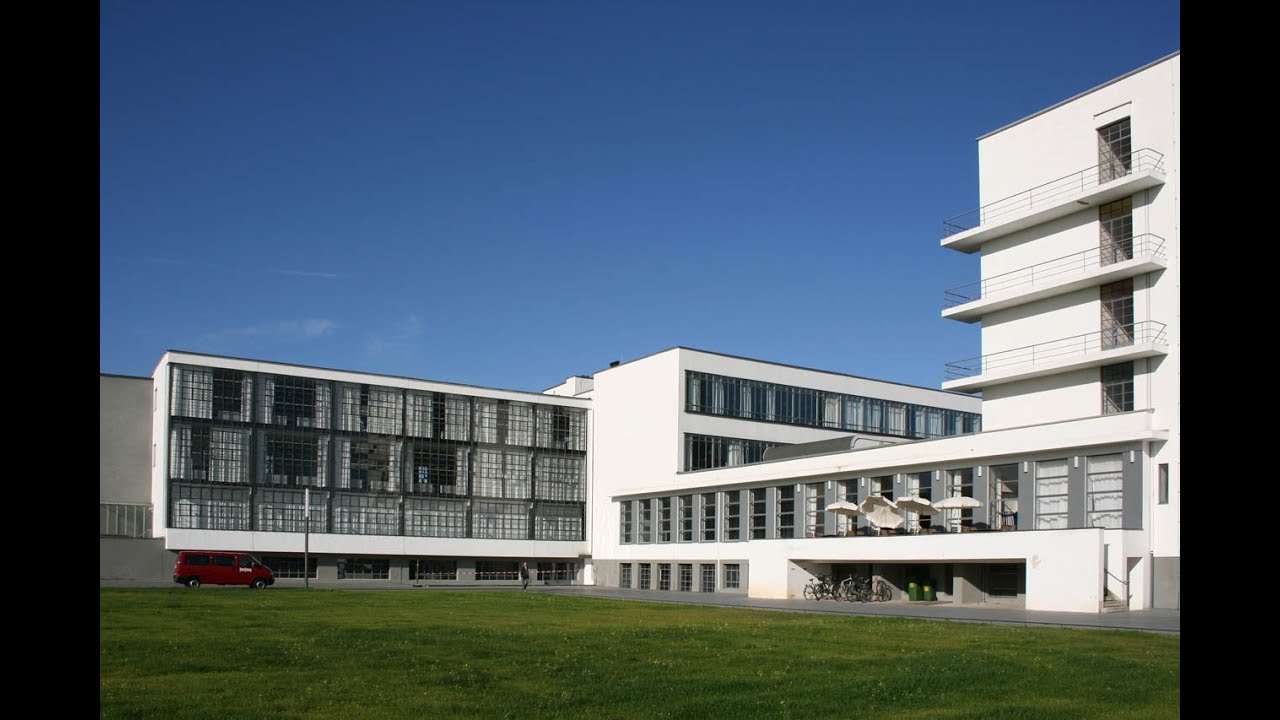Modern Architecture - Redefining Design And Functionality
Modern architecture, also known as contemporary architecture, is a style that emerged in the early 20th century and continues to influence the design of buildings and structures today.
Author:George EvansApr 17, 202332K Shares865.2K Views

Modern architecture, also known as contemporary architecture, is a style that emerged in the early 20th century and continues to influence the design of buildings and structures today.
This architectural style is characterized by its sleek lines, minimal ornamentation, and use of modern materials such as glass and steel.
In this article, we will explore the history of modern architecture, its key features, and some of the most significant modern architectural structures in the world.
History Of Modern Architecture
The roots of modern architecture can be traced back to the late 19th and early 20th centuries, a time when many architects and designers were searching for new forms and styles that reflected the rapidly changing world around them.
Some of the key movements that influenced modern architecture include:
- Art Nouveau:An ornamental style that emerged in the late 19th century and emphasized natural forms and curves.
- Arts and Crafts:A movement that emphasized traditional craftsmanship and rejected mass-produced goods.
- Bauhaus:A German design school founded in 1919 that emphasized functionalism and the use of modern materials.
- International Style: A style of architecture that emerged in the 1920s and 1930s and emphasized clean lines, simple shapes, and the use of modern materials.

Bauhaus : A History Of Modern Architecture
Key Features Of Modern Architecture
Some of the key features of modern architecture include:
- Clean lines and simple shapes:Modern buildings often feature clean, straight lines and simple geometric shapes, such as squares, rectangles, and circles.
- Minimal ornamentation:Modern architecture tends to be minimalistic, with little or no decorative detailing.
- Use of modern materials:Modern architects often use materials such as steel, glass, and concrete to create sleek, contemporary structures.
- Open floor plans: Many modern buildings feature open floor plans, with large, unobstructed spaces that flow seamlessly from one area to another.
Famous Examples Of Modern Architecture
There are many famous examples of modern architecture around the world, including:
- The Guggenheim Museum Bilbao in Bilbao, Spain:Designed by Frank Gehry and completed in 1997, this museum is known for its distinctive titanium exterior and unusual curved shape.
- The Sydney Opera House in Sydney, Australia:Designed by Jørn Utzon and completed in 1973, this iconic building is known for its distinctive sail-like roof.
- The Seagram Building in New York City, United States: Designed by Mies van der Rohe and completed in 1958, this skyscraper is known for its minimalist design and use of steel and glass.
Sustainability In Modern Architecture
In recent years, there has been an increased focus on sustainability in modern architecture.
Many architects are now designing buildings that are energy-efficient, use sustainable materials, and incorporate features such as green roofs and rainwater harvesting systems. Some notable examples of sustainable modern architecture include:
- The Bullitt Center in Seattle, United States:Completed in 2013, this six-story building is designed to be one of the most energy-efficient commercial buildings in the world, with features such as solar panels and a rainwater harvesting system.
- The Edge in Amsterdam, Netherlands:Completed in 2014, this office building is designed to be energy-neutral, with features such as a solar-powered roof and a smart lighting system that adjusts to the needs of individual workers.
Key Architects And Buildings Of Modern Architecture
Modern architecture has a rich history, spanning from the early 20th century to the present day.
Throughout this time, numerous architects have made significant contributions to the field, designing iconic buildings and influencing the direction of the movement.
Here are some of the most notable architects and buildings of modern architecture:
- Le Corbusier - Villa Savoye
- Ludwig Mies van der Rohe - Farnsworth House
- Frank Lloyd Wright - Fallingwater
- Walter Gropius - Bauhaus School
- Alvar Aalto - Finlandia Hall
- Zaha Hadid - Heydar Aliyev Center
- Renzo Piano - The Shard
- Norman Foster - The Gherkin
- Frank Gehry - Guggenheim Museum Bilbao
- I.M. Pei - Louvre Pyramid
These architects and their buildings have left a lasting impact on modern architecture and continue to inspire architects today.
Influences On Modern Architecture
Modern architecture is a style that has been influenced by various factors over the years. Some of the most significant influences on modern architecture are:
Industrialization
The Industrial Revolution changed the way buildings were constructed. With the advent of new building materials like iron, steel, and concrete, architects were able to design taller and more massive buildings.
Technology
Advances in technology have had a significant impact on modern architecture. Computers and 3D modeling software have made it easier for architects to design and visualize their ideas.
Minimalism
Modern architecture is characterized by its clean lines, simple forms, and minimalist aesthetic. This is a departure from the ornate and decorative styles that were popular in previous eras.
Functionality
Modern architecture places a strong emphasis on functionality. Buildings are designed to meet the needs of their occupants, rather than just being aesthetically pleasing.
Globalization
Modern architecture is a global movement, with architects from around the world contributing to its development. This has led to a diversity of styles and approaches to design.
Environmentalism
Sustainable design is becoming an increasingly important consideration in modern architecture.
Buildings are designed to be energy-efficient and environmentally friendly, with features like green roofs and solar panels becoming more common.
Social And Political Movements
Modern architecture has been influenced by social and political movements, such as the Bauhaus movement and the International Style.
These movements sought to create a new architecture that reflected the values and ideals of their time.
The Future Of Modern Architecture
Modern architecture is a constantly evolving field, with new materials, technologies, and design concepts emerging all the time. Here are some potential trends that could shape the future of modern architecture:
Sustainability
As concern for the environment continues to grow, more architects may prioritize sustainable design in their projects.
This could mean incorporating renewable energy systems, using eco-friendly building materials, or designing buildings that can adapt to changing environmental conditions.
Technology
Advances in technology have already revolutionized the way architects design and construct buildings, and this trend is likely to continue.
Virtual reality tools, 3D printing, and other new technologies could allow architects to create even more complex and innovative designs.
Social Responsibility
With growing awareness of social justice issues, more architects may prioritize creating buildings that serve the needs of marginalized communities.
This could mean designing affordable housing, community centers, or other public buildings that provide vital services.
Health And Wellness
The COVID-19 pandemic has highlighted the importance of designing buildings that promote health and well-being.
In the future, more architects may focus on creating buildings that prioritize natural light, fresh air, and other features that promote physical and mental health.
Overall, the future of modern architecture is likely to be shaped by a variety of factors, from technological advances to changing social and environmental priorities.
Architects who can stay ahead of these trends and incorporate them into their work are likely to be successful in the years to come.
People Also Ask
Who Were Some Of The Most Famous Modern Architects?
Some of the most famous modern architects include Le Corbusier, Frank Lloyd Wright, Ludwig Mies van der Rohe, and Zaha Hadid.
How Has Modern Architecture Influenced The Design Of Homes?
Modern architecture has had a significant impact on the design of homes, with many contemporary houses featuring open floor plans, large windows, and minimalist aesthetics.
What Are Some Common Materials Used In Modern Architecture?
Common materials used in modern architecture include concrete, steel, glass, and natural materials such as wood and stone.
What Is The Difference Between Modern Architecture And Contemporary Architecture?
While modern architecture refers specifically to the architectural style that emerged in the early 20th century, contemporary architecture is a broader term that encompasses a wide range of architectural styles that are currently being practiced.
How Has Technology Influenced Modern Architecture?
Technology has had a significant impact on modern architecture, enabling architects to design buildings with new materials and techniques that were not previously possible.
For example, computer-aided design (CAD) software has revolutionized the way architects can design and visualize their projects.
Final Words
Modern architecture has had a significant impact on the design of buildings and structures around the world.
With its focus on clean lines, simple shapes, and the use of modern materials, it continues to be a popular style today.
As architects and designers continue to explore new ways of creating sustainable and energy-efficient buildings, the future of modern architecture looks bright.

George Evans
Author
George Anderson, an exceptional architectural designer, envisions and brings to life structures that transcend the realm of imagination. With an unwavering passion for design and an innate eye for detail, George seamlessly blends form and function, creating immersive spaces that inspire awe.
Driven by a deep appreciation for the interplay of space, light, and materials, George's innovative approach redefines the possibilities of architectural design. His visionary compositions leave an indelible mark, evoking a sense of wonder and transforming the built environment.
George Anderson's transformative designs and unwavering dedication continue to shape the architectural landscape, pushing the boundaries of what is possible and inspiring generations to come.
Latest Articles
Popular Articles